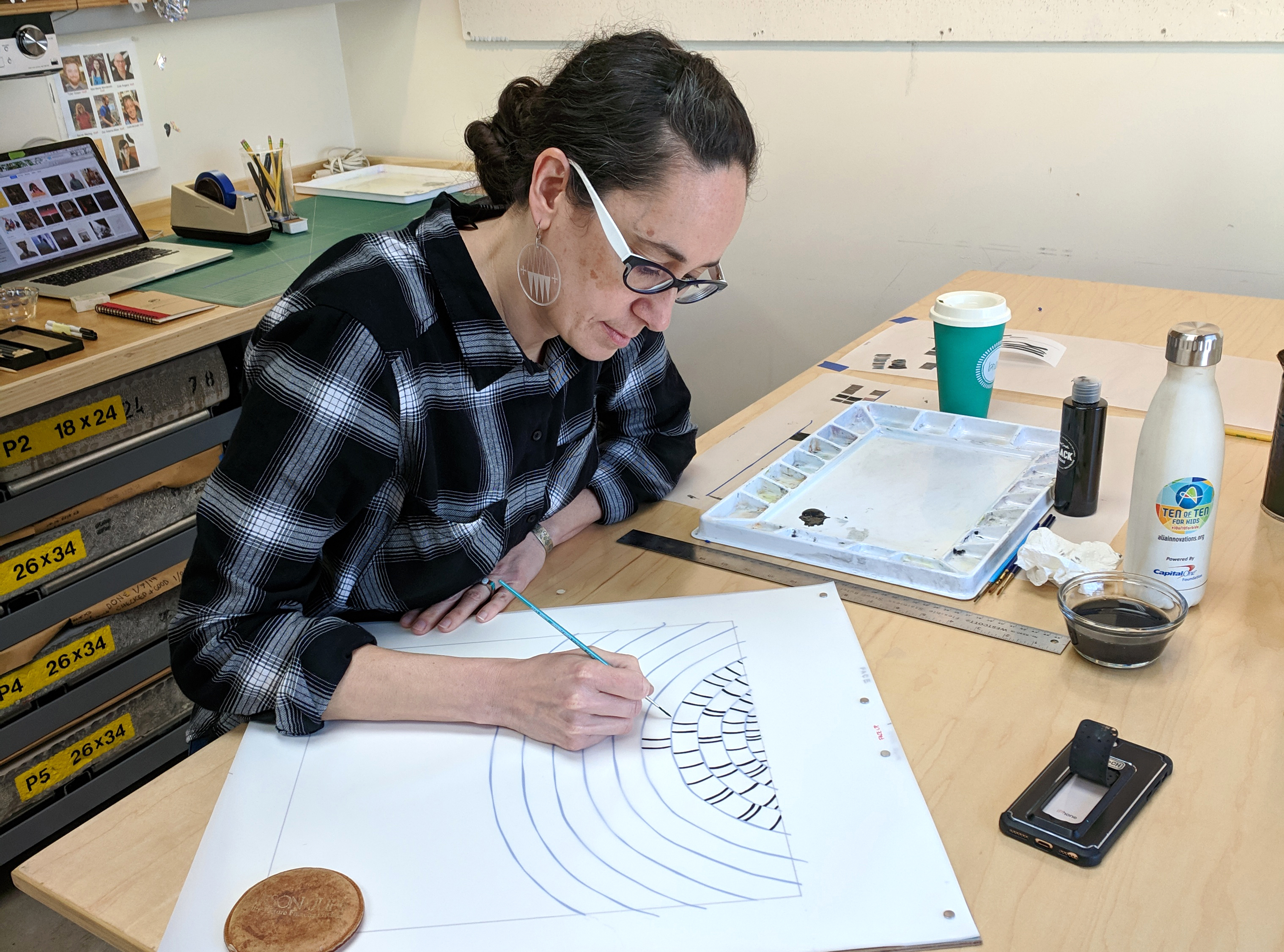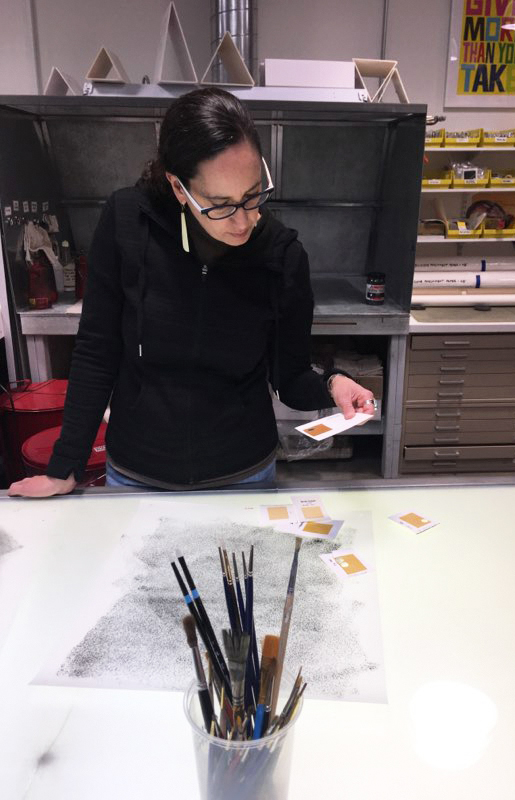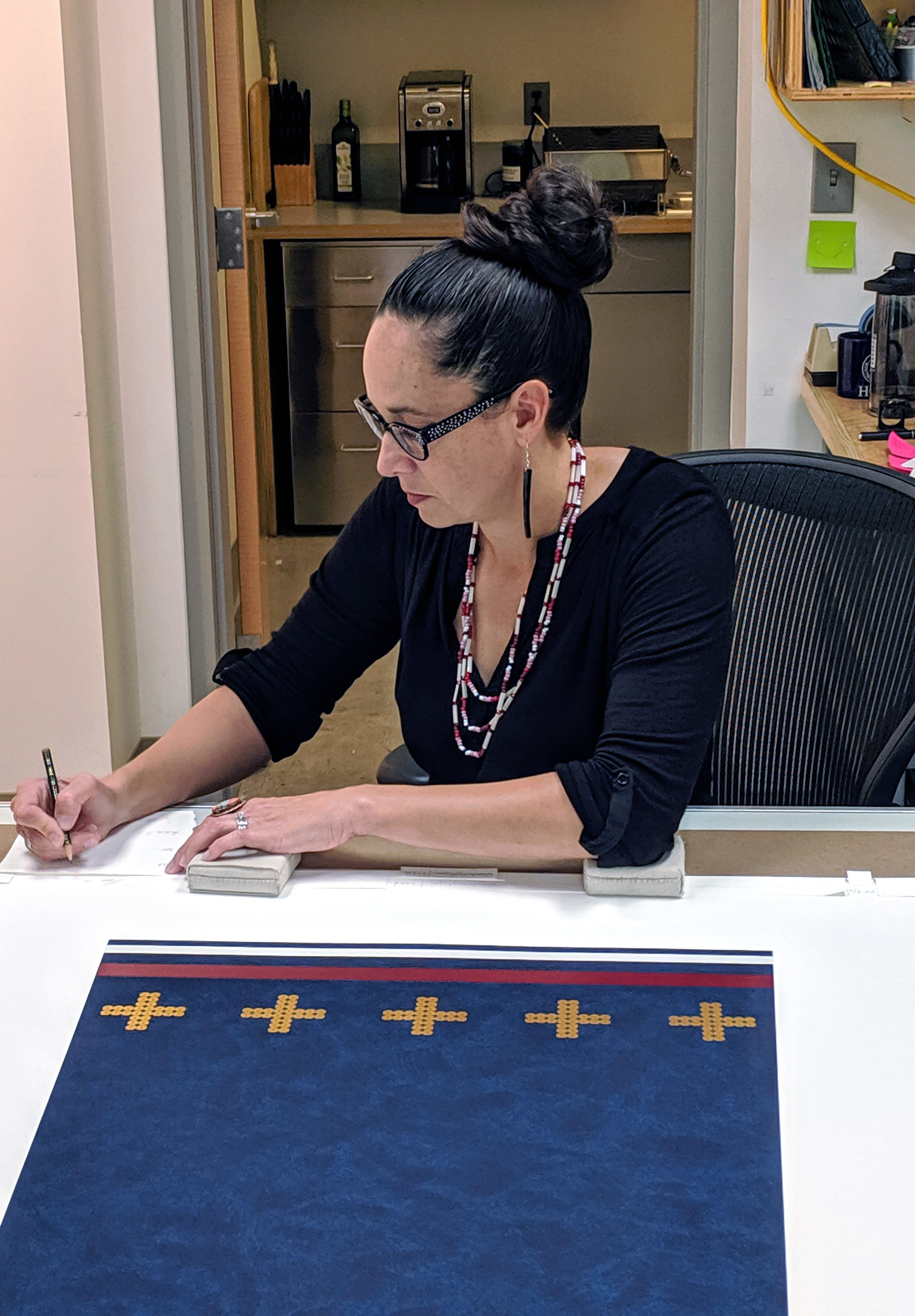
Born 1976, Madison, Wisconsin
It was in Madison, Wisconsin, at the community center potlucks where Native families gathered on Sundays, that Dyani White Hawk (Sicangu Lakota) learned to bead as a young teen. Lakota and Ojibwe family friends in Minnesota helped her develop stronger sewing skills in her twenties and thirties.1 She learned porcupine quillwork from a Choctaw instructor at the Institute of American Indian Arts in Santa Fe, New Mexico. Combining such indigenous art forms, which she loves, with abstract painting, which she also loves, is one way White Hawk, who is of Lakota and European ancestry, “encourages audiences to think critically about historically imposed hierarchical systems and recognize the deep inherent worth and value within traditional materials and practices,” she says.


Six years after graduating from Madison’s Malcolm Shabazz City High School, White Hawk sold snowboarding equipment to fund her journey to Kansas to attend tribal college. She earned an associate degree (2003) at Haskell Indian Nations University in Lawrence, Kansas, followed by a BFA (2008) at the Institute of American Indian Arts. Her idea to marry modern abstract painting with Lakota abstract art forms—whether incorporating actual beads and quills or meticulously mimicking them in paint—took shape while earning an MFA (2011) at the University of Wisconsin, Madison. Her painting in “Hearts of Our People: Native Women Artists” (2019–20), organized by the Minneapolis Institute of Art, referenced quillwork with its thousands of tiny vertical lines. Her Highpoint “Takes Care of Them” (cat. nos. 295–298 ), which employs and foil, mimics Plains-style dresses with their dentalium shells, quills, and ribbons.
White Hawk lives in Shakopee, Minnesota, with her husband, Daniel Polk (Diné, San Carlos Apache, Quechan), whom she met at Haskell, and their two daughters. From 2011 to 2015, she was director and curator of All My Relations Gallery, Minneapolis, a space dedicated to exhibiting contemporary Native artists. Among her awards are a Carolyn Glascoe Bailey Foundation Minnesota Art Prize (2020), United States Artists Fellowship (2019), Jerome Hill Artist Fellowship (2019), Eiteljorg Contemporary Art Fellowship (2019), Nancy Graves Grant for Visual Artists (2018), Native Arts and Cultures Foundation fellowship (2017, 2015), and Joan Mitchell Foundation grant (2014). Recent one-person exhibitions include “Dyani White Hawk: Speaking to Relatives,” Kemper Museum of Contemporary Art, Kansas City, Missouri (2021); “She Gives” (2020), Plains Art Museum, Fargo, North Dakota; and “See Her” (2019), Lilley Museum of Art, University of Nevada, Reno. Other recent group exhibitions include “Indelible Ink: Native Women, Printmaking, Collaboration” (2019), University of New Mexico Art Museum, Albuquerque; “Monarchs: Brown and Native Contemporary Artists in the Path of the Butterfly” (2017–19), Bemis Center for Contemporary Arts, Omaha, Nebraska, and other venues; “Contemporary Art: Recent Modes of Abstraction” (2017), St. Louis Art Museum; and “The Horse Nation of the Ochéthi Šakówin” (2016–17), Heritage Center at Red Cloud Indian School, Pine Ridge, South Dakota, and other venues.
—Marla J. Kinney
Notes
Dyani White Hawk, phone conversation (April 2020) and email correspondence (May 2021) with the author. ↩︎
| words